1919 World Series Game 3 - Cincinnati Reds @ Chicago White Sox
The 1919 season was an important one for major league baseball because of what happened the year before.
- With the United States in its second year of participation in World War I, the three-man National Commission that ruled baseball ended the 1918 season prematurely on Labor Day.
- Baseball players, like almost all other young male citizens, were subject to the military draft. However, men who worked in a war-related industry such as ship building or munitions production were exempt.
- In May 1918, the Selective Service Division issued the "work or fight" rule, which stated that by July 1, all men of draft age not involved in "useful" work could be brought before a draft board and compelled to participate in war work or military service.
- A growing number of Americans, including many baseball fans, asked why able-bodied young men were still playing professional baseball (the minor leagues had shut down for 1918) instead of contributing to the war effort.
- The pennant winners, the Red Sox and the Cubs, played the World Series, but the two teams irritated the public even more when the players, who should have been grateful that they could play baseball a little longer, had the audacity to threaten to strike prior to Game 5 because their cut of the gate receipts was less than they anticipated.
When the war in Europe ended by armistice in November 1918, baseball had a chance to recapture the public's affection the following spring as it began a 140-game season.
The White Sox were 3-to-1, 5-to-1, or 7-to-5 favorites to win the best-of-nine Series depending on which line you preferred.
The three-man National Commission that ruled baseball changed the format from seven games to nine to increase the popularity of the event and generate more revenue, especially after the participants in the '18 Fall Classic nearly staged a strike to protest a reduction in the earnings they were promised.
- The World Series had been the #1 betting event in the United States almost from its first year in 1903. It was conservatively estimated thate $2,000,000 was bet on the 1919 World Series in New York City alone.
Many feared that gamblers would corrupt baseball as they had boxing and horse racing. Suspicions had been raised about the 1914 World Series, when the Miracle Braves not only upset the powerful Philadelphia Athletics but swept them in four games. Some writers also wondered about the 1918 Series when the players learned they would not earn as much as anticipated.
- Rumors of a fix spread through Chicago and Cincinnati, unleashing a flood of betting on the Reds that caused bookies to make the National League champs a slight favorite. To professional gamblers, this meant that the series would be fixed.
The evening before Game One, Attell, acting as Rothstein's emmisary, met with Gandil, Risberg, Cicotte, Williams, Felsch, McMullin, and Weaver at their hotel in Cincinnati and told them he had $100,000 if they would throw the Series. He would pay them in installments of $20,000 after each loss. Gandil would receive each payment and distribute it to his teammates. Cicotte promised to lose Game One but said he wanted to win his second game because it would help with next year's contract negotiations. Williams said he would do his part in Game Two.
|
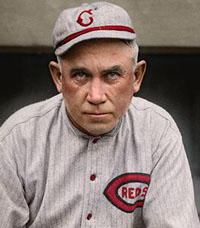
Pat Moran
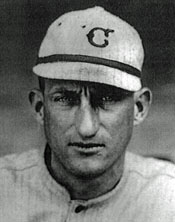
Slim Sallee
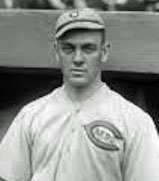
Hod Eller
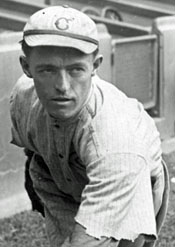
Dutch Ruether
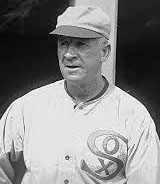
Kid Gleason

Eddie Cicotte
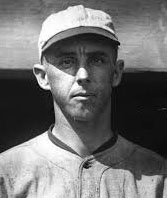
Lefty Williams
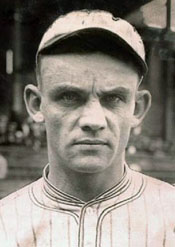
Chick Gandil
|
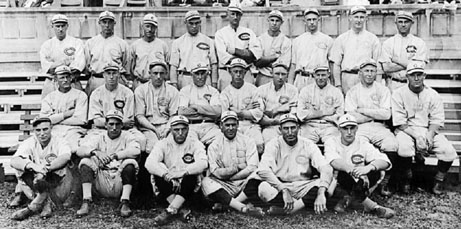 Cincinnati Reds
Cincinnati Reds |
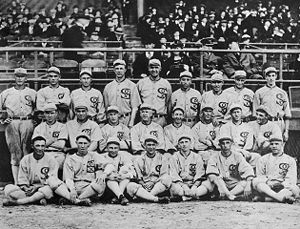 Chicago White Sox
Chicago White Sox |
Chicago's top two pitchers provided fuel for the conspiracy theorists when they lost the first two games in Cincinnati.
- After pitching 306 innings, Cicotte had been suffering from a "lame" arm. However, Gleason had rested him since the September 24 pennant clincher, giving him eleven days off before Game One. Eddie told reporters the day before the Series, "My arm is all right now. It has returned to its normal condition, responding to the rest and treatment given it the last two weeks. I should go into the Series with my arm in the best condition of the year."
Gandil recalled: "That night, on the eve of the Series, several players got threatening phone calls. I must have had five during the early part of the evening. Many of them - maybe all of them - came from cranks, but they still left me creepy. Cicotte was so upset that he left the hotel about midnight and took a long walk. I don't think he slept an hour all night."
Gandil says that the players met the morning of Game One and "decided that there was too much suspicion now to throw the games without getting caught. We weighed the risk of public disgrace and going to jail against taking our chances with the gamblers by crossing them up and keeping the $10,000. ... We gambled that (Rothstein) wouldn't dare do anything to us since he was in no position himself to make a fuss over the cash. Our only course was to try to win, and we were certain that we could."
But Chick added, "When we trotted out on the field that day for the opener, we were still a tense bunch of ballplayers. And, as if things weren't bad enough, some joker in the stands yelled to Cicotte, "Be careful, Eddie. There's a guy looking for you with a rifle."
- So imagine everyone's surprise when Cicotte lasted only 3 2/3 innings in the opener, surrendering six runs on seven hits and two walks as the Reds romped, 9-1.
The next day, the New York Times commented, "Cicotte pitched for the Reds."
That evening, White Sox owner Comiskey and manager Gleason discussed the rumors the series might be fixed. Reportedly, Kid then told the team th
Meanwhile, Attell failed to come up with the $20,000 he had promised the Black Sox for the loss, saying "It's all out on bets." He promised to have the money the next morning.
Burns sought out Williams outside the Sox hotel and asked him if he was still committed. Even though
Lefty had not received a penny up front, he assured Burns he would still throw the game.
- Lefty Williams fared better the next day, but the bottom of the 4th did him in. He walked three batters, and every one of them scored on a single and a triple. Cincy won 4-2 despite being outhit 10-4..
Called "the quintessential junk-ball pitcher," Williams succeeded by throwing his curve ball anywhere he wanted in the strike zone. But in Game Two, C Ray Schalk kept calling for the curve in the fateful 4th only to have Lefty throw his middling fastball. Ray had an animated exchange with his pitcher on the mound and that evening told his manager that both Cicotte and Williams had crossed him up on numerous pitches in the two games. "How many times did that happen during the season?" Gleason asked. "Not once," replied Schalk.
That exchange prompted Kid to call a team meeting. He told them he had heard stories that gamblers had contacted some of them. The manager challenged any player who knew anything to step forward. None did.
- The Reds, to a man, including their manager, proclaimed after the series that they had heard the rumors of a fix but saw no evidence of the Sox not trying. Ban Johnson said he sat through the entire series without the slightest notion of a conspiracy.
Even though they lost again, the White Sox conspirators were not paid their promised amount by the gambling syndicate.
As the Series moved to Chicago, Schalk was not the only one who suspected the rumors about the fix were true.
- In Cincinnati the night before the Series began, Hugh Fullerton, a syndicated sports writer based in Chicago, met several gamblers from Chicago and New York who talked openly about the White Sox throwing the Series. Fullerton called his friend Cicotte, who denied the rumor. Then Hugh ran into Bill Burns, a key operative in the fix although the writer didn't know that. Burns advised him to "Get wise and get yourself some money" by betting on the Reds.
- Fullerton went to Comiskey, who said he had already heard about the rumors and was furious because AL President Ban Johnson (whom Comiskey hated) was doing nothing about it. Fullerton then went to Johnson. Hugh wrote in 1935 in the Sporting News, "I think Johnson had already heard rumors. I put it to him straight that the evidence indicated a crooked series. He just scoffed and said it was just Comiskey squealing."
- The concerned writer also cornered Pittsburgh owner Barney Dreyfuss and named the five White Sox who were in on the plot. Dreyfuss became angry and indignant that anyone would accuse major league players of rigging a Series.
- That same night, Fullerton submitted a short message to be sent to participating newspaper to add at the beginning of the story he had filed earlier that day. It warned the fans that "something queer was coming off and to refuse to wager on the games or series." However, only two newspapers out of 40 printed the note.
- During Game One, Fullerton and his roommate, former Giants P Christy Mathewson, who was working for the same newspaper syndicate as Hugh, took turns going down from the press box to watching the pitching. "After two innings, I was morally certain that something was coming off. Matty watched Cicotte pitch and returned shaking his head."
- That evening, Schalk came to Fullerton's room and declared that "Cincinnati's victory came from hits made off pitched balls thrown exactly opposite of his signals." Hugh told Ray, "Keep your mouth shut or go to Comiskey and Gleason. If you make charges against anyone you'll be the goat - you can't prove them, and it would ruin you."
Needing a win desperately - falling behind 3-0 was a big hole to climb out of even in a best-of-nine series - Gleason called on Dickey Kerr, who had won the pennant clincher September 24.
- The 5'7" 155 lb southpaw had enjoyed a fine rookie season. His 13 wins (against only seven losses) were the third-most on the team. He also compiled a sparkling 2.88 ERA. He was praised for his "control, fast curve and slow ball ..."
- Gleason would normally call on Red Faber as his third starter, but Red was injured and ill.
- Kerr was a member of the Eddie Collins clique on the White Sox along with Schalk and RF Nemo Leibold. Gandil knew not to approach any of these players about throwing the Series. Not only would they reject his offer, they would also squeal.
Williams and Jackson were loners who responded to Gandil's invitation, Williams wholeheartedly and Jackson halfheartedly. Gandil and others swore there was no way they'd win for Kerr, whom they called a "Busher." But events during the game changed their minds.
- On the other side, Moran was uncertain whether to start Ray Fisher or Jimmy Ring, both righthanders. He stood beside Fisher as the Vermont school teacher warmed up. Apparently satisfied with what he sign, the Reds skipper went with Ray.
Fisher had spent eight years with the Yankees before coming to Cincinnati. Moran explained afterward: "I started Fisher because I figured that, having pitched for years against the Sox, he knew something about the weakness of their batsmen."
- The crowd of 29,126
was short of capacity, with many bleachers seats going begging. This was attributed to false reports in the local papers that rooters formed a line a mile long through the night waiting for the gates to open.
One notable attendee was Chicago Federal Judge Kenesaw Mountain Landis. An avid baseball fan, he had witnessed the two games in Cincinnati as well. Little did anyone know that events surrounding the 1919 World Series would propel into the position of Commissioner of Baseball 15 months later.
Starting Lineups for Game 3
Statistics are regular season.
Cincinnati Reds
| Morrie Rath |
2B |
.264 |
| Jake Daubert |
1B |
.276 |
| Heinie Groh |
3B |
.310 |
| Edd Roush |
CF |
.321 |
| Pat Duncan |
LF |
.244 |
| Larry Kopf |
SS |
.270 |
| Greasy Neale |
RF |
.242 |
| Bill Rariden |
C |
.216 |
| Ray Fisher |
P |
14-5 |
|
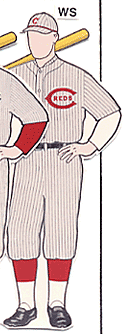 |
 |
Chicago White Sox
| Nemo Leibold |
RF |
.302 |
| Eddie Collins |
2B |
.319 |
| Buck Weaver |
3B |
.296 |
| Joe Jackson |
LF |
.351 |
| Happy Felsch |
CF |
.275 |
| Chick Gandil |
1B |
.290 |
| Swede Risberg |
SS |
.256 |
| Ray Schalk |
C |
.282 |
| Dickey Kerr |
P |
13-7 |
|
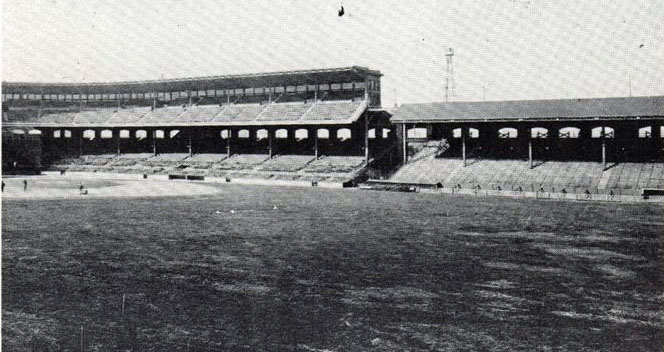
White Sox Park
1st Inning
2nd Inning
- After CF Edd Roush hit the first pitch on the ground to SS Swede Risberg, who threw him out at 1st.
LF Pat Duncan rapped a single to RCF for his third hit of the young series.
The runner went to 2nd when SS Larry Kopf grounded out, 6-3.
With a chance to give the Reds the lead and continue the momentum from the previous two games, Neale bounced to Collins.
- The Sox took their first lead of the Series.
LF "Shoeless Joe" Jackson singled to LF - his fourth hit in the three games.
According to Jackson, he got his nickname during a mill game in Greenville SC. He had blisters on his foot from a new pair of spikes. It hurt so much that he took off the shoes before he came to bat. A heckler in the stands called out, "You shoeless son of a gun, you!"
Felsch bunted the ball toward the mound. Fisher fielded it and threw off balance to 2nd. The ball sailed into CF, allowing Jackson to race to 3rd and Felsch to reach 2nd.
1B Chick Gandil, the man who insisted the conspirators would nevr win for a "busher," cracked his fourth hit of the Series, a single to RF that scored both runners. He took 2nd on the throw to the plate.
Tough and ornery, Gandil was not well liked by his teammates. In May 1919, he got into a knockdown drag out fight with Tris Speaker of the Indians, who had slid hard into him. None of the White Sox players came to Chick's aid, and some openly rooted for Speaker. Still, Gandil had emerged as one of the White Sox leaders even if no one in the locker room fully trusted him. Collins, a Columbia grad who was part of Connie Mack's $100,000 infield, and Schalk openly despised Gandil and refused to speak to him.
Risberg walked.
C Ray Schalk tried to bunt the runners over, but Fisher fired to 3B Groh to get the lead man.
Reporter Hugh Fullerton, who was making a list of suspicious plays, claimed that Gandil loafed on the bunt in an effort to sabotage the rally. "Gandil, coming up from second, had the play beaten by a block," wrote Fullerton, "but he stood up and seemed to be conversing with Kid Gleason (coaching at third base), when Fisher suddenly grabbed the ball and flashed it to Groh." But no other writer agreed with Fullerton, instead crediting Fisher with making a great play.
With Kerr at the plate, Gleason signaled for another bunt that produced the same results - a forceout at 3rd from the pitcher.
Groh fielded Leibold's grounder and threw to 1st to retire the side without further damage.
White Sox 2 Reds 0
3rd Inning
4th Inning
5th Inning
6th Inning
- Carbon copy of the bottom of the 5th: 1-2-3 in the Cincinnati order did the same as the White Sox leadoff guys.
Rath 6-3, Daubert lined to Jackson, and Groh 5-3.
- The contest got heated in this half inning.
Shoeless Joe made the fans laugh when he swung himself off his feet trying to hit the first pitch and fell down. Fisher apparently took offense that a batter would swing so lustily at one of his pitches and low-bridged Jackson on his next delivery. Joe retaliated by dragging a bunt down the first base line, figuring that Fisher would have to field the ball. The ball rolled foul, as Jackson may have intended, and "when Ray came over to the base line, Jackson gave him a shove and a few remarks were passed." Then Joe blopped a single over the shortstop's head. However, he was soon thrown out stealing 2-6.
After Felsch walked, Rariden showed off his arm again to nail Happy trying to steal.
Gandil fanned.
7th Inning
- More bad blood surfaced. Reds utility infielder Jimmy Smith, his club's "official goat-getter," had been riding Eddie Collins from the bench the entire Series. Finally, the White Sox second sacker couldn't take it any more and went after Smith. Umpire Billy Evans had to separate the two.
Kerr continued in command.
Roush popped to Gandil.
Duncan took a healthy swing to strike out.
Kopf flew to right field.
- Fisher induced three groundouts.
Risberg and Schalk out 5-3 and Kerr, 4-3.
8th Inning
9th Inning
- The Reds went out without even a whimper.
Rath grounded to Collins.
Daubert struck out.
Weaver threw out Groh to end the snappy hour and a half game and complete Kerr's brilliant three-hit shutout.
FINAL SCORE: White Sox 3 Reds 0
Postgame
It was not yet the custom for reporters to enter the locker rooms after a game. However, the managers and some of the players would make extra money writing (with the aid of a reporter) a daily newspaper column during the series for a newspaper syndicate.
Reds Clubhouse
- Manager Moran wrote in his syndicated newspaper column: "My hat is off to little Dick Kerr, for that boy pitched a brand of ball never surpassed in a world series clash. The boys tried their best to smash his offerings to safe territory, but it was wasted effort. And when a fellow can halt the Reds on the rampage they started last Wednesday, that fellow is great."
On his own pitcher: "Ray despite the fact that he was beaten, pitched a really splendid game of baseball. If he hadn't made that second inning error, everything might have been different."
White Sox Clubhouse
- Kerr was presented a gold watch after the game by the "Texas oil millionaires" who were attending the Series. Engraved on the back of the watch was: "To the Greatest Pitcher in the World. From His Friends in Texas." Dickey became an instant hero in Chicago, giving White Sox fans hope that their team was back on track to win the series.
- Manager Gleason wrote in his syndicated column: "I believe that our victory marks the turning point in the series, and from now on I don't believe the Reds will be able to stop my team. I have all the respect in the world for Pat Moran and his men. They have made it plain that they can play winning world series baseball. But I do not believe they can successfully cope with the sort of baseball which the Sox can play and did play today and will continue to play. ... The Sox have got going. Their heads are up, and they're playing together. They're playing now and will continue to play as they did through the long stretch of the season and clearly demonstrate that they are one of the best all-around teams of years."
Aftermath
The White Sox managed to extend the series to eight games.
- Cicotte pitched much better in Game 4, allowing only five hits and walking none. But Cincinnati hurler Jimmy Ring outperformed him in the Reds' 2-0 victory.
That night, Gandil gave Williams, the Game 5 starter, two envelopes, one for Lefty and one for his friend Jackson. Each envelope contained $5,000.
- Williams pitched well the next day but, as in Game Two, one bad inning cost the Sox the game, although it was his defense that caused the problem this day. With the game scoreless in the 6th, Jackson and Felsch played Alphonse and Gaston on Rath's fly to LCF that went for a double. Next, Happy badly misjudged a fly to CF off the bat of Roush, coming in for the ball, freezing, then running back but too late. The triple scored Rath. Then Roush scored on a sacrifice fly. Hod Eller had more than enough runs as he threw a three-hit shutout to give the Reds a commanding four games-to-one lead.
Gleason had thought his clear-the-air meeting with his players after Game Two had gotten his team back on track, especially after Game 3 and then Game 4, when Cicotte pitched well in the loss. But Game 5 rekindled his suspicions. He again challenged anyone who knew about a conspiracy to come forward.
- The White Sox won the next two games in Cincinnati, 5-4 behind Kerr (coming back from a 4-0 deficit) and 4-1 behind Cicotte.
When the series returned to Chicago for Game 8, bettors with supposedly inside knowledge spread the word to lay a bundle on the Reds. Minutes before the first pitch, Fullerton ran into a Chicago betting man who told him to bet on Cincinnati. "It'll be the biggest first inning you ever saw."
- Williams retired the first batter, then gave up two singles and two doubles. Gleason yanked him from the mound. The Reds built a 10-1 lead before the White Sox scored a face-saving four in the bottom of the 8th - too little, too late.
In his 1963 book Eight Men Out, which was made into a successful movie, Eliot Asinof wrote that Lefty Williams had been threatened by gamblers the night before Game 8. But Asinof's only source for that story was a cryptic remark made by Mrs. Williams in the 1930s to a family friend. Trying to explain why her husband threw games, she said, "All those others were doing it, and he didn't understand what it really meant, and besides, he was threatened." But Williams never said anything about a threat in his testimony before the grand jury that investigated the 1919 World Series.
Despite all the rumors and Fullerton's ongoing attempts to get the National Commission to investigate the alledged fix, baseball fans laid the 1919 World Series to rest and moved on to 1920.
- In the last weeks of the 1920 season, with the White Sox engaged in a down-to-the-wire pennant race with the Indians, the Cook County (Chicago) Grand Jury begins investigating whether or not a Cubs game against the Phillies August 31 was fixed.
- When one of the players called to testify says he knew the 1919 World Series was fixed and names four players involved, the Grand Jury broadens the scope of its inquiry. During the course of the investigation, three players confess to their involvement - Cicotte, Jackson, and Williams.
- The grand jury indicts five gamblers and eIght White Sox players - Cicotte, Felsch, Gandil, Jackson, McMullin, Risberg, and Weaver. Owner Comiskey suspends the players indefinitely.
- In October, the major league owners appoint Judge Kenesaw Mountain Landis as the sport's first commissioner, giving him unprecedented power to rule the sport.
- The trial begins in July 1921. However, the signed confessions of the three players are missing. As a result of that and other factors, the jury returns not guilty verdicts for all 13 individuals on August 2.
- The next day, despite the acquittals, Commissioner Landis banishes all eight players from baseball for life,
|
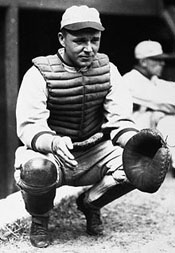
Ray Schalk

Hugh Fullerton
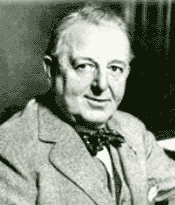
Charles Comiskey

Ban Johnson
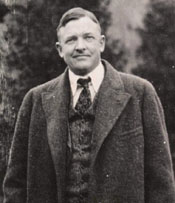
Christy Mathewson
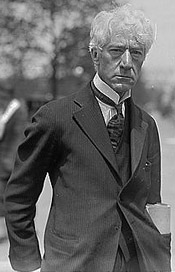
Judge Kenesaw Mountain Landis

Game 3 starting pitchers
Dickey Kerr and Ray Fisher
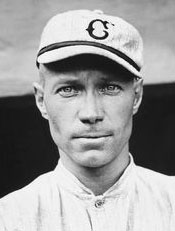
Morrie Rath
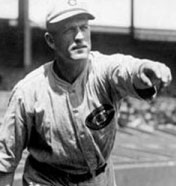
Jake Daubert
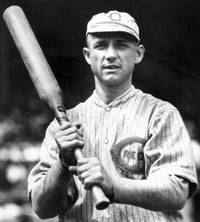
Heinie Groh
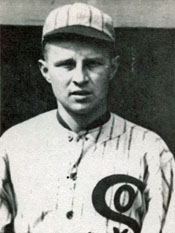
Nemo Leibold
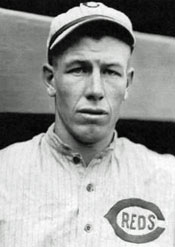
Earl "Greasy" Neale
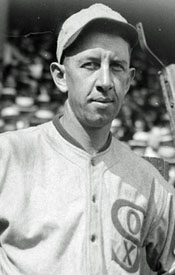
Eddie Collins

Buck Weaver
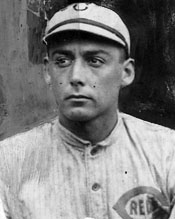
Edd Roush
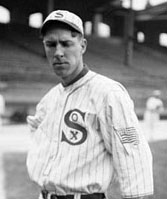
Swede Risburg
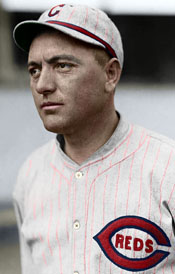
Pat Duncan
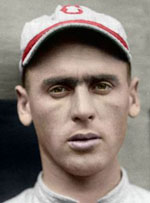
Larry Kopf
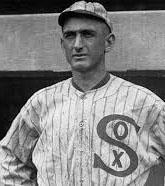
Joe Jackson
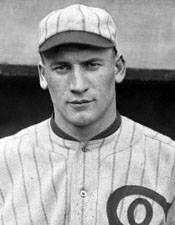
Happy Felsch
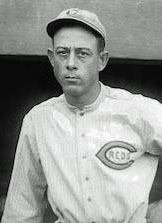
Bill Rariden
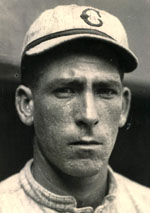
Dolf Luque

Jimmy Ring
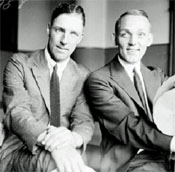
Risberg and Weaver await their Grand Jury appearances.
|
|
|